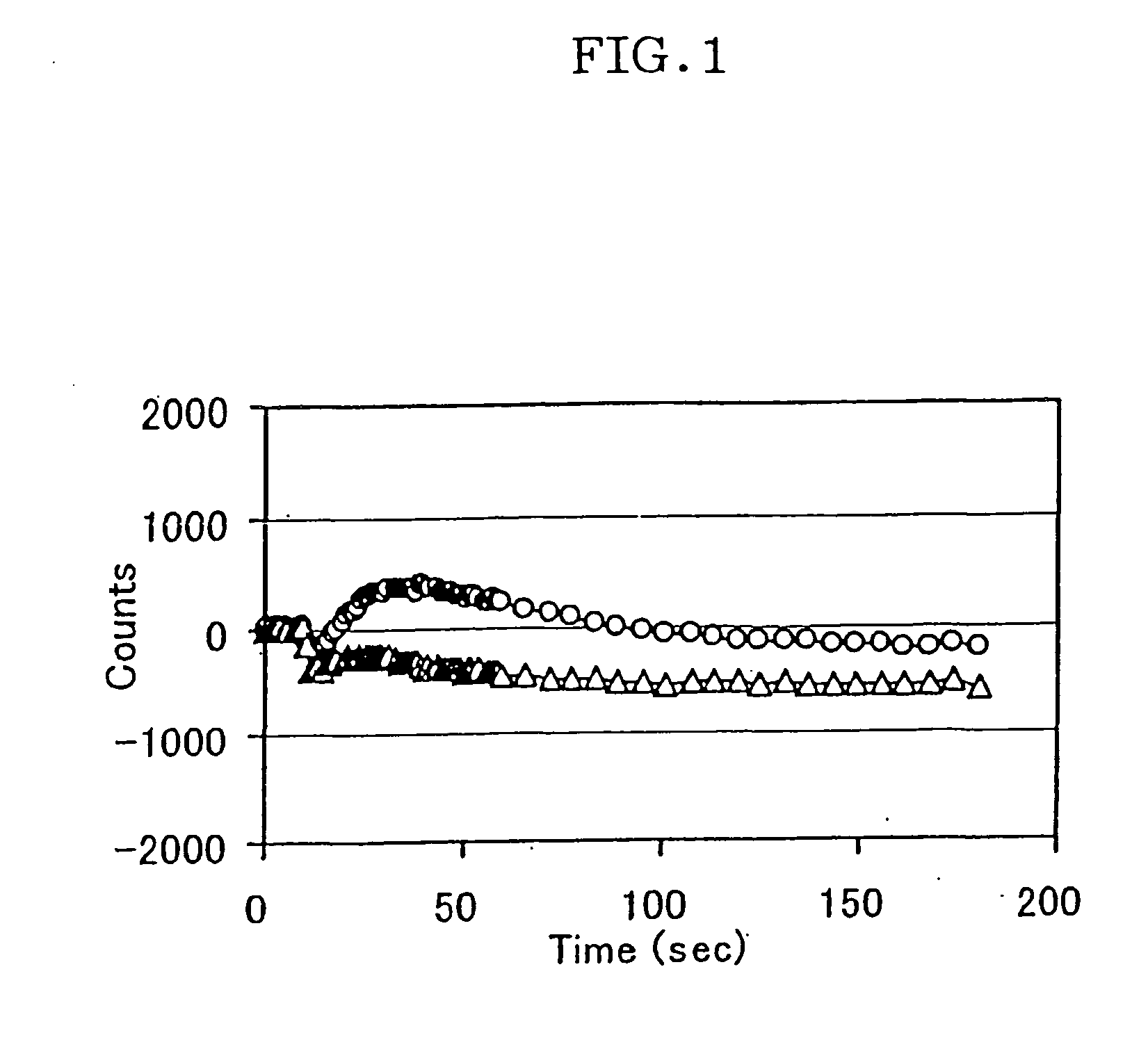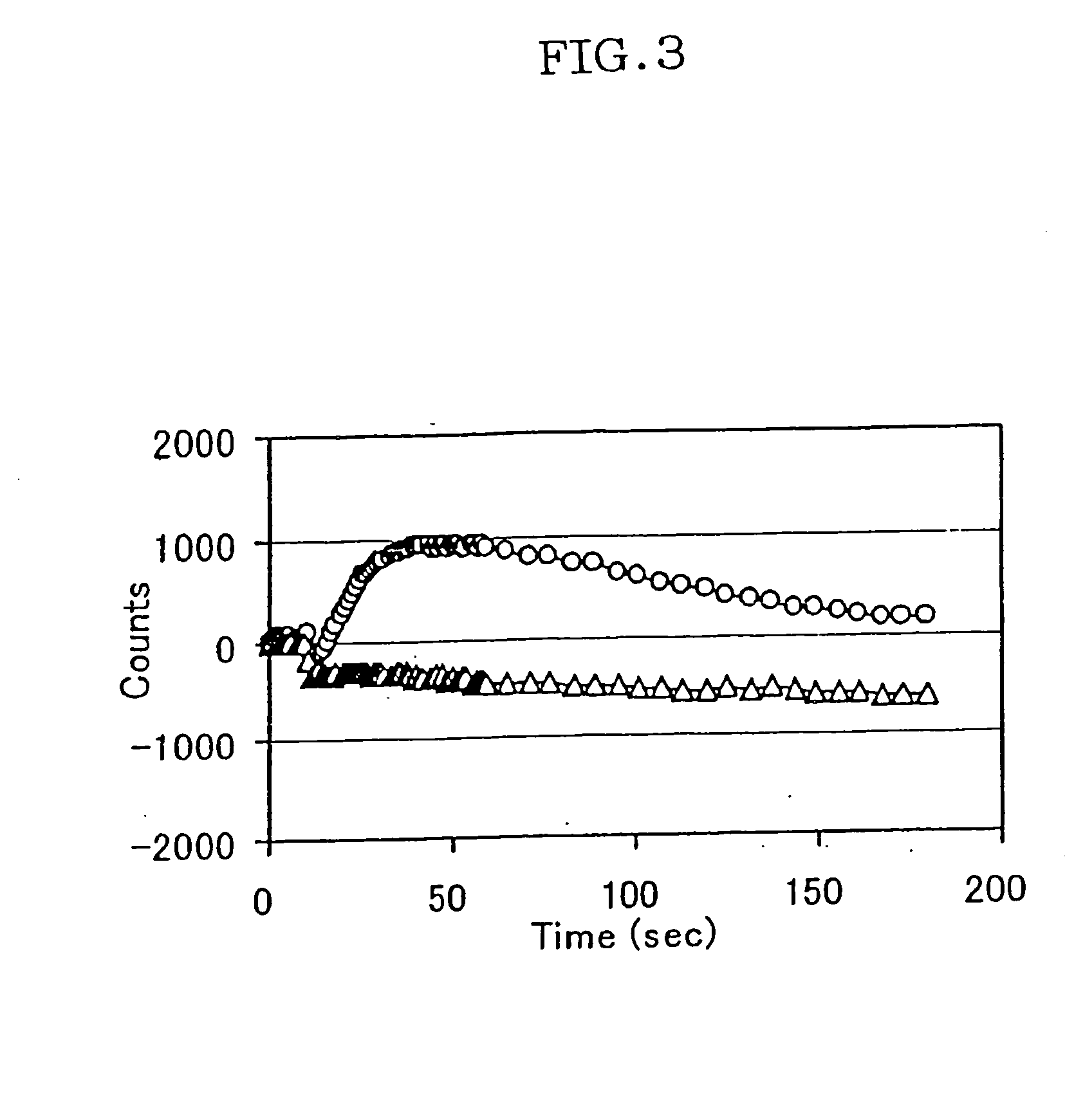Novel screening method
a g protein-coupled receptor and screening method technology, applied in the field of new g protein-coupled receptor proteins, can solve the problems of not all g protein-coupled receptors have been discovered, it is difficult to predict their functions from information, and it is not known if there are subtypes of known receptor proteins, etc., to achieve suppressed camp production, increased intracellular ca2+ level, and improved the effect of insulin secretion
- Summary
- Abstract
- Description
- Claims
- Application Information
AI Technical Summary
Benefits of technology
Problems solved by technology
Method used
Image
Examples
reference example 1
Construction of Human GPR40 Expression Vector
[0740] The DNA fragment encoding human GPR40 was acquired by the following PCR procedures. That is, using 20 pmols each of oligo DNA (SEQ ID NO: 40) shown by 5′>CGTCGACCCGGCGGCCCCATGGACCTGCCCCCGCATCGATTAGCAGTGGCGTTACTTCTGGGACTT<3′ as an antisense strand primer, 50 μl of a solution mixture containing 5 μl of 10× Advantage (registered trademark) 2 PCR Buffer (CLONTECH), 1 μl of 50×dNTP mix (CLONTECH), 1 μl of 50× Advantage 2 Polymerase Mix (CLONTECH) and 1 μl of human pancreatic cDNA solution (CLONTECH) as a template DNA was prepared. The reaction was carried out on a thermal cycler (GeneAmp (registered trademark) PCR System model 9700 (Applied Biosystems)), with a program by reacting at 96° C. for 1 minute and then by repeating the following cycle 35 times, one cycle set to include 96° C. for 30 seconds, 61° C. for 30 seconds, and 72° C. for 120 seconds and finally by extension at 72° C. for 10 minutes. After completion of the reaction, ...
example 1
Confirmation of the Reactivity of Fatty Acid with Human-Derived GPR40
[0741] The CHO-K1 cell line was cultured in HAM F-12 medium (Invitrogen) containing 10% fetal calf serum (Invitrogen), unless otherwise indicated. One day before transfection, 4.5×105 cells per 10 cm2 were plated, followed by incubation in a CO2 incubator adjusted to a concentration of 5% CO2 at 37° C. for at least 15 hours. Using Lipofectamine reagent (Invitrogen), transfection procedures were carried out by modifications of the method attached to the reagent. When a 6-well plate was used for the incubator, the following procedures were performed. First, 2 tubes each having a 1.5 ml volume were prepared and 100 μl each of Opti-MEM-I medium (Invitrogen) was dispensed in each tube. Next, 1 μg of the expression vector was charged in one tube and in another tube, 6 μl of Lipofectamine reagent was charged, which were mixed together. The mixture was settled for 20 minutes at room temperature. To the solution, 800 μl o...
example 2
Cloning of cDNA Encoding Mouse Spleen-Derived GPR40 and Determination of its Base Sequence
[0743] Using as a template mouse spleen cDNA (Marathon-Ready™ cDNA; Clontech, Inc.), PCR was carried out using two primers, i.e., primer 1 (SEQ ID NO: 7) and primer 2 (SEQ ID NO: 8). Pyrobest DNA polymerase (Takara Shuzo) was used for PCR, followed by (1) reacting at 98° C. for 1 minute, (2) repeating the reaction at 98° C. for 10 seconds, 55° C. for 30 seconds and 72° C. for 60 seconds 40 times, and (3) extension at 72° C. for 2 minutes. After the reaction, the amplified product was cloned to a plasmid vector, pCR-Blunt (Invitrogen, Inc.) in accordance with the protocol of Zero Blunt PCR Cloning Kit (Invitrogen, Inc.). The vector was transfected to Escherichia coli TOP10 (Invitrogen, Inc.) and the plasmid-bearing clones were selected in LB agar medium containing kanamycine. Analysis of the individual clones on base sequences gave the cDNA sequence (SEQ ID NO: 2) encoding a novel G protein-co...
PUM
| Property | Measurement | Unit |
|---|---|---|
| temperature | aaaaa | aaaaa |
| temperature | aaaaa | aaaaa |
| temperature | aaaaa | aaaaa |
Abstract
Description
Claims
Application Information
 Login to View More
Login to View More - R&D
- Intellectual Property
- Life Sciences
- Materials
- Tech Scout
- Unparalleled Data Quality
- Higher Quality Content
- 60% Fewer Hallucinations
Browse by: Latest US Patents, China's latest patents, Technical Efficacy Thesaurus, Application Domain, Technology Topic, Popular Technical Reports.
© 2025 PatSnap. All rights reserved.Legal|Privacy policy|Modern Slavery Act Transparency Statement|Sitemap|About US| Contact US: help@patsnap.com



